Research Areas
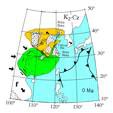
Paleomagnetism - plate tectonics & mountain building
Paleomagnetism remains the best method to make quantitative paleogeographic reconstructions of the Earth during the geological past. Moreover, this technique can help unravel the kinematics of deformation within orogenic belts, which is crucial to understand how mountains form and to understand the underlying processes governing plate tectonic processes on Earth. We are actively working in Europe, Australia, Africa, South America, the Caribbean and Asia, addressing tectonic problems covering most of the Earth's geological past.
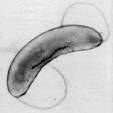
Biomagnetism - Bacteria, Mars and Beyond
Biogeomagnetism concerns the interactions of organisms with the geomagnetic field. Most of our work is focused on magnetic bacteria - including the continuous monitoring of a natural pond at the newly established Niederlippach Cernter of Biomagnetism. We also investigate the mechanisms of magnetic-field reception in higher organisms (trout, bats, etc.).
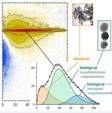
Magnetic properties of rocks
Magnetic properties are extremely useful to help understand the genesis and subsequent history of rocks. A number of magnetic properties (Curie temperature, hysteresis parameters, etc.) facilitate the unique identification of each magnetic mineral. These same properties are sensitive to composition, oxidation state, pressure, size and shape of the magnetic mineral assemblage. Knowledge of these parameters is crucial when interpreting complex systems typically encountered in the Earth and planetary sciences.
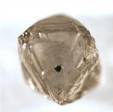
High-pressure mineral physics - Formation history of diamonds and meteorites
An important research focus in our group involves understanding how pressure (stress) influences the magnetic properties of minerals relevant to the Earth and planetary sciences. To do so, we combine high-pressure mineral physics with direct magnetic measurements through the development of non-magnetic diamond anvil cells that are introduced directly into the bore of a 3-axis superconducting magnetometer.
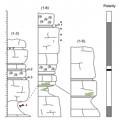
Archeomagnetism - Early hominid evolution
We are involved in a research project that addresses the appearance of homo egaster in Eurasia some 1.8 million years ago. This follows upon the finding of several hominoid fossils in Georgia (homo georgicus), which triggered a concerted effort to identify similar potential localities in Armenia and to identify the environmental conditions in the region when the hominoids first emigrated from Africa to Eurasia.
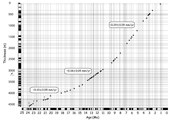
Magnetostratigraphy
Magnetostratigraphy is a powerful tool to date fossil-poor sediments, provide detailed sedimentation rates and help make regional stratigraphic correlations. Moreover, by studying variations in the magnetic mineralogy of the sediments through time, one can learn more about changes in the sediment source and transport history. Our projects include magnetostraphic studies across the Permian/Triassic boundary, the Miocene of the German Molasse basin, and Vendian to Early Palaeozoic of Siberia and Baltica and Miocene sequences in central Asia (western China and Kyrgyzstan).

Geomagnetism - present and past magnetic field behavior
An important aspect of our group is the maintenance of an INTERMAGNET geomagnetic observatory located in Fürstenfeldbruck. Recording the directional behavior of the Earth magnetic field and its variations in intensity during polarity transitions provides valuable information about the basic mechanisms controlling the Earth's magnetic field. These data place important constraints to fully understand the geodynamo.
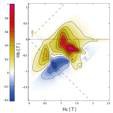
Industrial applications for improvement of magnets
The main goal is to identify mechanisms by which magnetic materials undergo irreversible switching and to extract the distribution of switching fields. Knowledge of these magnetic properties helps improve the design of the material, for example, to increase the bit density in a magnetic hard disc or to optimize the energy product of a ferromagnetic core in an electromagnet.
